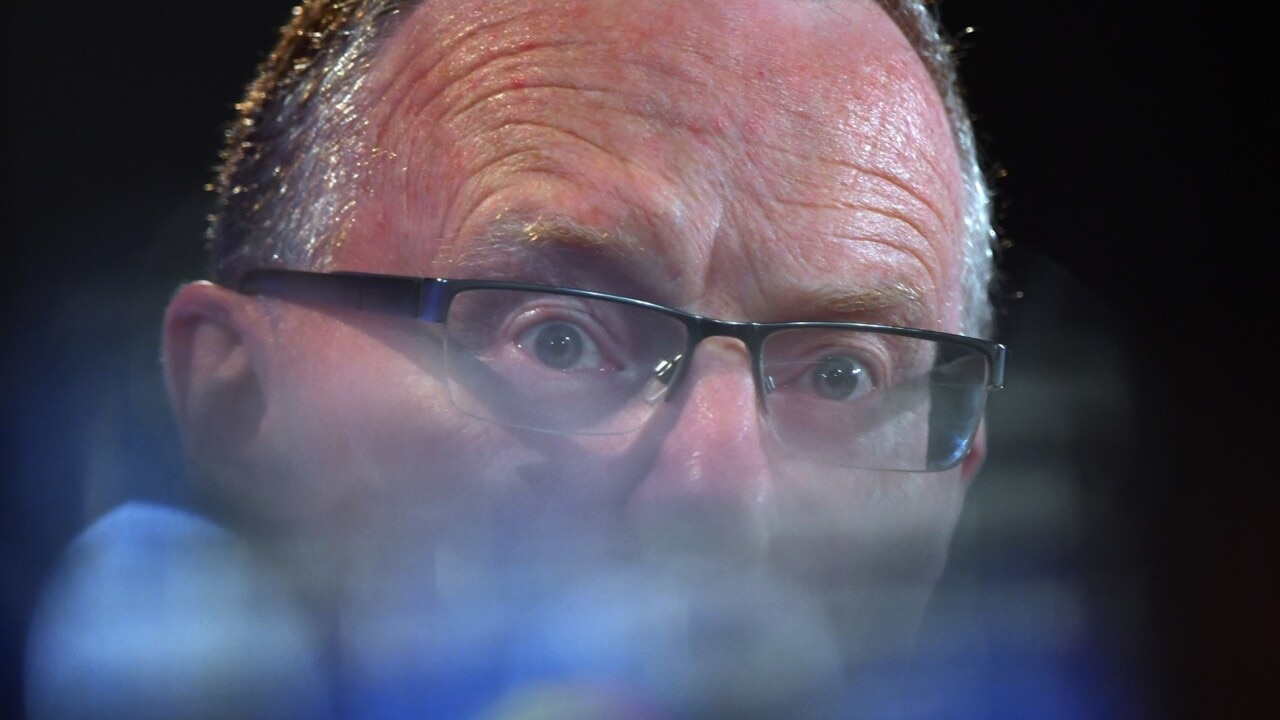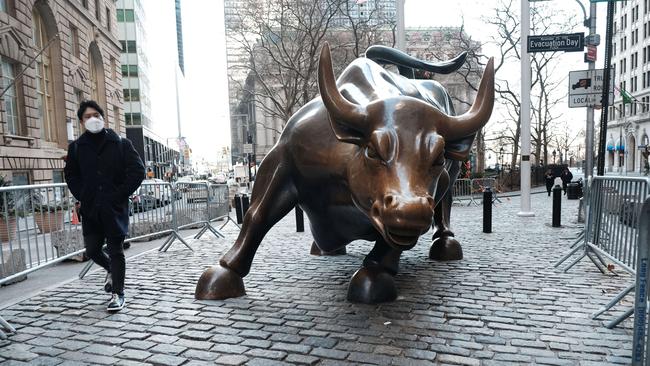S&P 500 on the cusp of joining next bull run
The S&P 500 is on the cusp of a new bull market but the outlook depends on the economy, Fed policy and the AI revolution that so far accounts for most of the rise this year.

The S&P 500 is on the cusp of a new bull market but the outlook depends on the economy, Fed policy and the AI revolution that so far accounts for most of the rise this year.
The US benchmark last week reached 4282.37 points, its highest level in almost 10 months, and volatility hit a post-Covid low of 14.6 per cent as strong US jobs growth, better workforce participation and lower average hourly earnings growth gave hope that rate increases were finished and the US would avoid a recession.
But interest rate decisions from the Reserve Bank of Australia and the Bank of Canada this week, and US CPI data next week, may test market sentiment before the next US interest rate decision.
Inflation still seems too high and sticky to say the US and Australia are in the clear. Investors will also look to see if a restart of debt issuance by the US Treasury starts to pull money out of bank deposits, reigniting the recent US regional bank crisis that may yet cause a credit crunch.
The S&P 500’s recent break above 4200 points may trigger some buying on a technical basis, but the more important level is 4325. The RBA is expected to pause its rate rises again, but its guidance is likely to stay hawkish after higher than expected inflation data and award wages decisions last week.
Of 30 economists surveyed by Bloomberg, 20 expect the RBA to hold, but a rate rise is about 50 per cent priced by interest rate futures. The consensus among economists is for another 25 basis points lift to a decade high of 4.1 per cent in July, and some now see the cash rate hitting 4.6 per cent.

FOMU (fear of material underperformance) may be the new catch phrase among the bearish majority, but a new bull market in the S&P 500 won’t make any difference to the outlook. However, it is interesting to note that after an unusually long but small bear market – fuelled by calls of a US recession that seem to be taking a long time to come to fruition – the S&P 500 is poised to join the narrower Dow Jones Industrial Average and tech-heavy Nasdaq Composite in bull markets.
Bull markets are defined on a technical basis by gains in an index of at least 20 per cent from a low point on a daily closing basis, and are normally considered to mark the “end” of bear markets.
But of course, new bear markets sometimes start to form straight after bull markets end.
During the Global Financial Crisis, the S&P 500 rose 24 per cent from November 2008 to January 2009, only to dive 28 per cent to March 2009 when quantitative easing picked up steam.
As of Friday, the S&P 500 was 19.7 per cent above its bear market low of 3577.03 points that was reached on October 12, 2022, having been in bear market territory for 244 trading days.
It’s the longest S&P 500 bear market since the 484 trading days ending in May 15, 1948.
But it’s also been an unusually shallow bear market and if it ends now, it will have happened without the benefit of the policy stimulus that has often preceded the end of bear markets in the past.
The S&P 500 troughed after falling 25.4 per cent from the post-pandemic bull market high in January 2022 to the current bear market low of October 2022.
In contrast, it fell 37 per cent after the dotcom bubble, 52 per cent in the first bear market during the subprime and subsequent GFC, and 34 per cent during the brief Covid-19 bear market. Each of those periods ended with policy stimulus.
This time the market is putting a lot of faith in the biggest US AI stocks like Nvidia, Alphabet and Microsoft that have accounted for most of the 11.5 per cent rise in the S&P 500 so far this year.
The working assumption is that it’s “too early” in the evolution of AI for the technology to seriously disappoint the market, and that seems fair given the massive jump in earnings projected by Nvidia.
Excluding the most recent bear market, the average bear market on the S&P 500 has lasted 142 trading days, according to Dow Jones Market Data. If the S&P 500 exits the current bear market on Monday, it would have taken 161 trading days to go from its bear market low to the start of a new bull market; the longest equivalent period since the 191 trading days ending July 25, 1958.
Excluding the current bear market, the average time taken for the S&P 500 to go from its bear market low to the start of a new bull market is just 61 trading days.
But once it exits a bear market, the S&P 500’s average one-year performance of 9.3 per cent – with a very wide range – is no better than the long-term average.








To join the conversation, please log in. Don't have an account? Register
Join the conversation, you are commenting as Logout